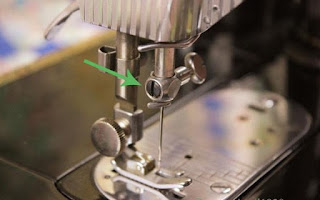Bangladesh is the most attractive country to the investor and buyers because of it's growing economy. World wide textile and RMG players are taking more initiative in their investment planning that shows a clear sign of wonderful potential of the country's clothing industry due to big domestic and overseas market. For the businesses of garment base technology, machinery, spare parts, and services to the garments and textile industry, this is the most potential opportunity as one roof platform for the buyers and sellers.
The local entrepreneurs of Bangladesh are highly optimistic about the growth as this sector has received tremendous success in RMG manufacturing and exporting over the one decade. Today the apparel export sector is a multi-billion-dollar manufacturing and export industry in the country.
The local entrepreneurs of Bangladesh are highly optimistic about the growth as this sector has received tremendous success in RMG manufacturing and exporting over the one decade. Today the apparel export sector is a multi-billion-dollar manufacturing and export industry in the country.
The overall impact of the ready made garment exports is certainly one of the most significant social and economic developments in modern Bangladesh.Now Bangladesh stands 87% export value from whole textile and garments industry.
 The back to back linkage of this garments are also playing significant role for growing the economy. Because of the recent development in compliance with the intervention of ACCORD and Alliance the exporters have been able to attract buyers to increase their business thus the other suppliers are getting benefits of it.
The back to back linkage of this garments are also playing significant role for growing the economy. Because of the recent development in compliance with the intervention of ACCORD and Alliance the exporters have been able to attract buyers to increase their business thus the other suppliers are getting benefits of it.
Keeping in mind about the demand of the customer the machinery and small parts supplier for Garment and Textile industry is giving extra eyes in Bangladesh. International Garments and Textile Machinery Exhibition of Bangladesh is being arranged by the BEOG & WIOA(Workforce Innovation and Opportunity Act) as their 5th edition. Simply, the GarTex is being arranged with a vast range of available and modern machinery. After four successful edition of this exhibition the fifth one is being arranged with a high exception of exhibitors and visitors.
- Event : International Garments and Textile Machinery Exhibition
- Edition: 5th
- Location: Dhaka, Bangladesh
- Venue: International Convention City Bashundhara (ICCB)
- Date: 27-29 June, 2019
- Time: 10am - 7pm
- Expected number Of Booths: 160
- Visitors: Business and Trade Visitors
- Official Web: http://www.limraexpo.com/gartex/index.php
You May Also Like:
International Garments and Textile Machinery Exhibition in Bangladesh 2019
Advertisements
Bangladesh is the most attractive country to the investor and buyers because of it's growing economy. World wide textile and RMG players are taking more initiative in their investment planning that shows a clear sign of wonderful potential of the country's clothing industry due to big domestic and overseas market. For the businesses of garment base technology, machinery, spare parts, and services to the garments and textile industry, this is the most potential opportunity as one roof platform for the buyers and sellers.
The local entrepreneurs of Bangladesh are highly optimistic about the growth as this sector has received tremendous success in RMG manufacturing and exporting over the one decade. Today the apparel export sector is a multi-billion-dollar manufacturing and export industry in the country.
The local entrepreneurs of Bangladesh are highly optimistic about the growth as this sector has received tremendous success in RMG manufacturing and exporting over the one decade. Today the apparel export sector is a multi-billion-dollar manufacturing and export industry in the country.
The overall impact of the ready made garment exports is certainly one of the most significant social and economic developments in modern Bangladesh.Now Bangladesh stands 87% export value from whole textile and garments industry.
 The back to back linkage of this garments are also playing significant role for growing the economy. Because of the recent development in compliance with the intervention of ACCORD and Alliance the exporters have been able to attract buyers to increase their business thus the other suppliers are getting benefits of it.
The back to back linkage of this garments are also playing significant role for growing the economy. Because of the recent development in compliance with the intervention of ACCORD and Alliance the exporters have been able to attract buyers to increase their business thus the other suppliers are getting benefits of it.
Keeping in mind about the demand of the customer the machinery and small parts supplier for Garment and Textile industry is giving extra eyes in Bangladesh. International Garments and Textile Machinery Exhibition of Bangladesh is being arranged by the BEOG & WIOA(Workforce Innovation and Opportunity Act) as their 5th edition. Simply, the GarTex is being arranged with a vast range of available and modern machinery. After four successful edition of this exhibition the fifth one is being arranged with a high exception of exhibitors and visitors.
- Event : International Garments and Textile Machinery Exhibition
- Edition: 5th
- Location: Dhaka, Bangladesh
- Venue: International Convention City Bashundhara (ICCB)
- Date: 27-29 June, 2019
- Time: 10am - 7pm
- Expected number Of Booths: 160
- Visitors: Business and Trade Visitors
- Official Web: http://www.limraexpo.com/gartex/index.php
You May Also Like:
Advertisements































